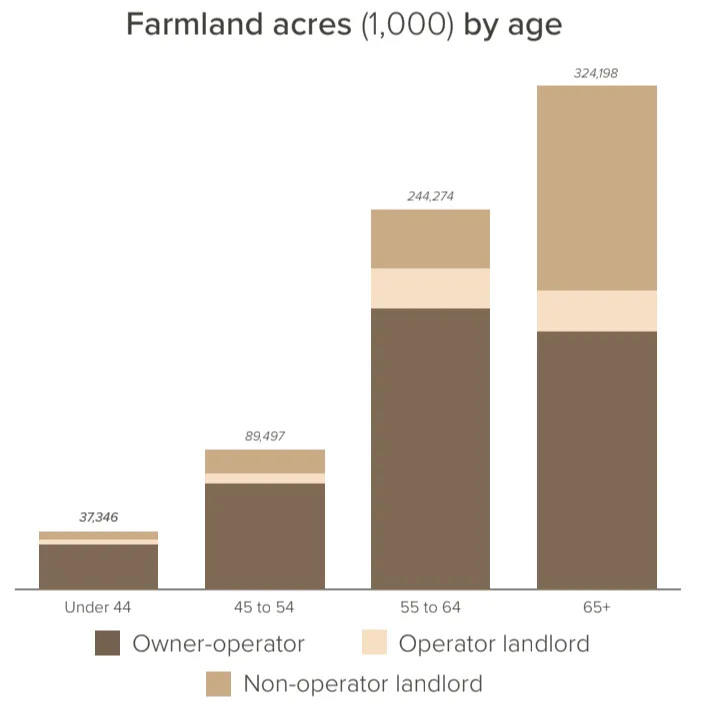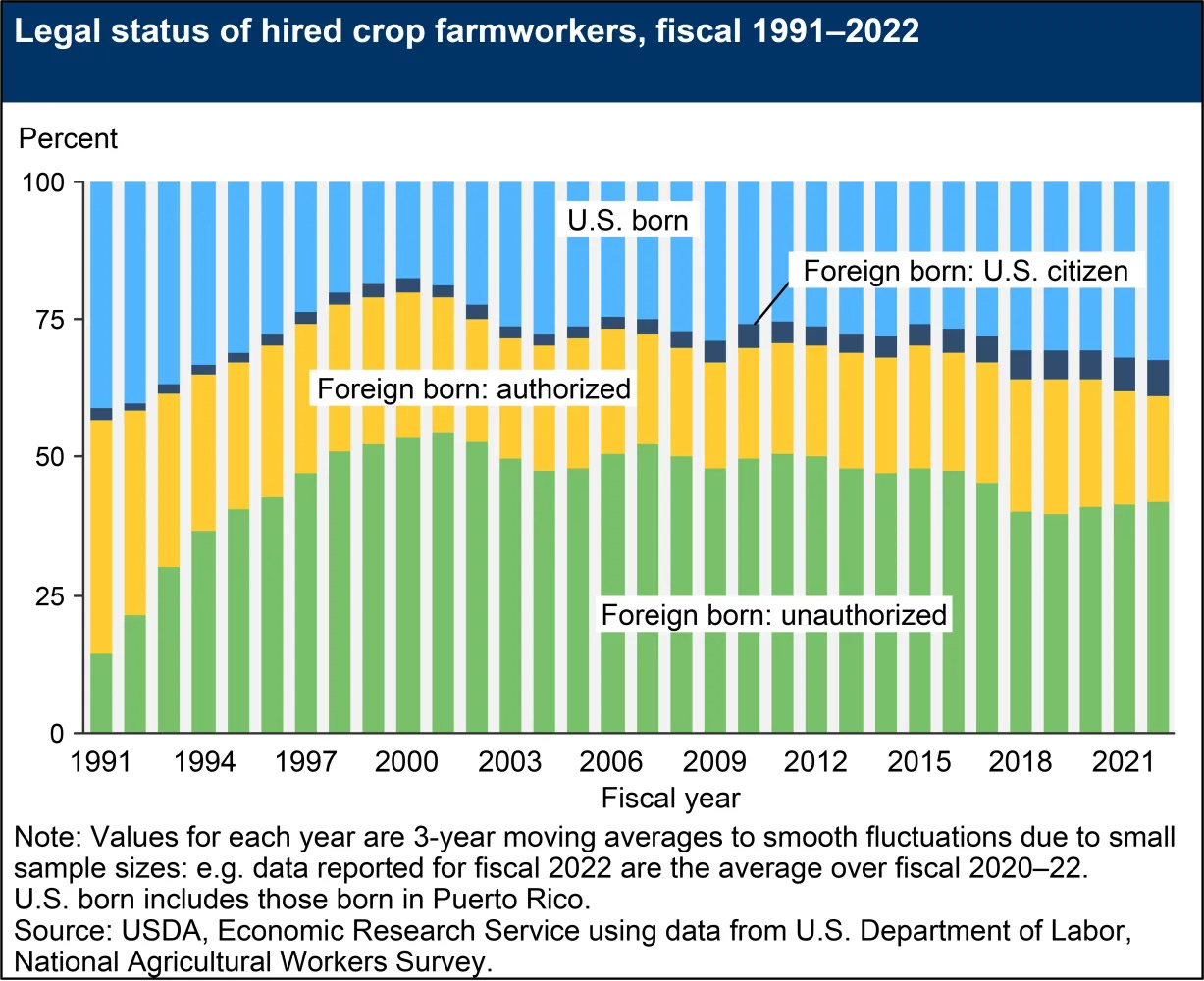The Last Harvest, Part 1: Labor Market and Demographic Realities
A deeper look at the aging farmer population, succession failures, and workforce challenges that threaten farm continuity
(~3 minute read)
[Authors note: this is the first of an eight-part series for an ongoing research piece and the analyses will be expanded with new research and insights. Please subscribe for further updates.]
THE LAST HARVEST SERIES
Synopsis
Part 1 of 8: Labor Market (You are here)
Part 2 of 8: Economy & Policy
Part 3 of 8: Historical Parallels
Part 4 of 8: Global Markets
Part 5 of 8: Water Resources
Part 6-8: [Coming soon]
1.1. Aging Farmers and a Looming Succession Crisis
Generational family-farms are becoming a thing of the past and we're at a tipping point. Nearly 96% of farms are small family-owned. The group of farmers who are over the age of 55 makeup 63% of U.S. operators who own over 80% of cropland. The family succession statistics are stark: only 30% of family farms transition successfully from the first to the second generation, 10% survive to the third, and less than 4% make it to the fourth. The slow-motion collapse of farm succession is not just a family tragedy—it’s a systemic unraveling of rural America. Every farm that fails to transition is either abandoned altogether and sold to be repurposed as residential or commercial space, or absorbed by large industrial farms or corporate interests, accelerating the decline of independent agriculture.
1.2. A Disappearing Workforce
It’s no wonder the succession percentages are so low though—nearly always cited as the #1 or 2 issues facing farmers are labor challenges. Agriculture in the U.S. has long been reliant on immigrant workers who make up nearly 70% of the agricultural workforce (an estimated 40% are undocumented). Specifically for farms that focus on agricultural crops, 50% of their workforce are seasonal migrants. The H-2A program is designed to fill these seasonal labor gaps. The number of certified H-2A workers increased by 65% from 225,000 to 370,000 between 2017 and 2022, yet it remains a contentious policy battleground. At best, left-leaning policy aims to increase regulation and slow the efficiency of the program while at worst some right-leaning initiatives aim to eliminate the program altogether. These moves could cripple farms dependent on timely, seasonal help, increasing the likelihood of crop losses and financial strain.
As policy shifts through the labor market, the on-the-ground effects are stark. With the recent tightening of immigration enforcement and rising deportation numbers, some farms have reported a majority of their crews simply not showing up at the beginning of this year, leaving crops unharvested and operations in limbo. The consequences of these abrupt policy shifts are going to be felt immediately and severely—lost yields, financial instability, and a workforce that is soon-to-be nowhere to be found. Each missing worker is another thread pulled from the fabric of America’s agricultural backbone.
1.3. Rural Collapse: A First Domino
As labor shortages intensify and farm succession fails at an alarming rate, American agriculture stands at a critical crossroads. This labor and demographic crisis is not occurring in isolation–as we examine the forces driving these changes, it becomes clear that labor and demographic realities are just the beginning. Looming over these challenges are broader economic currents, policy decisions, and market forces that threaten to reshape the very foundation of the nation’s food system. Understanding these domestic economic pressures will be essential to grasping the full scope of what’s at stake.
THE LAST HARVEST SERIES
Synopsis
Part 1 of 8: Labor Market (You are here)
Part 2 of 8: Economy & Policy
Part 3 of 8: Historical Parallels
Part 4 of 8: Global Markets
Part 5 of 8: Water Resources
Part 6-8: [Coming soon]
[Author’s note: this complete series is in draft form. References, sources, and citations will soon follow. If for any reason you find material on here that you have copyright ownership to and would like for me to immediately include credit or remove complete, please email me directly at chris@questioningrural.com.]



